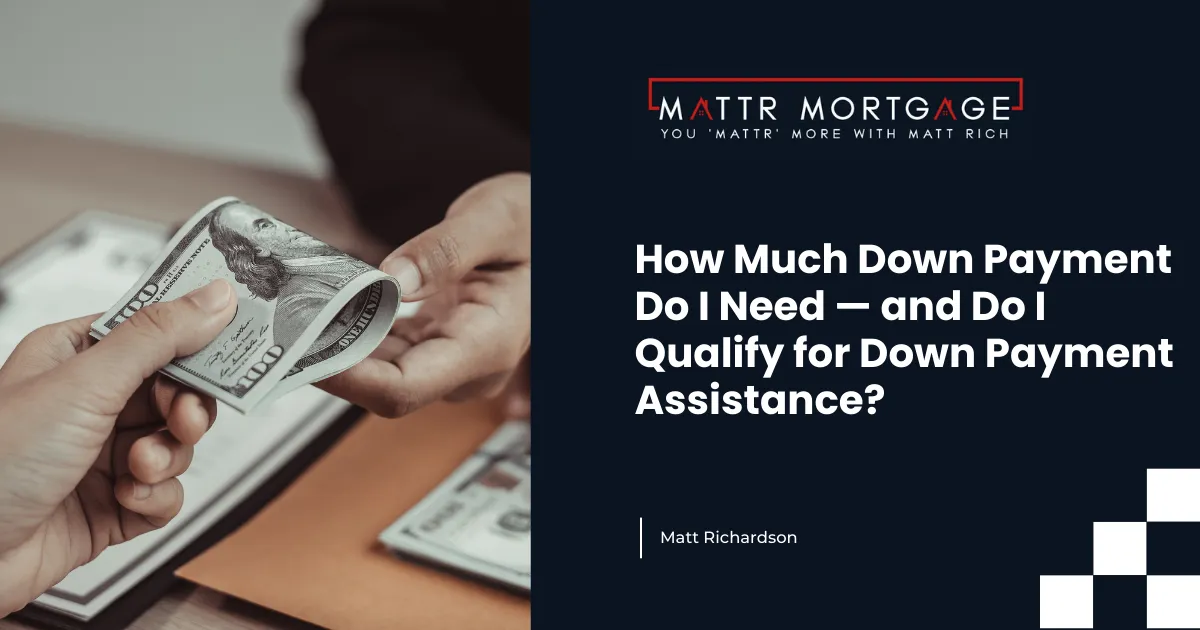
How Much Down Payment Do I Need — and Do I Qualify for Down Payment Assistance?
The Down Payment Myth: You Don’t Always Need 20%
One of the biggest myths in home buying is that you need to save up 20% for a down payment. The truth? Most buyers put down far less—especially first-time buyers. Understanding your options can open doors you didn’t know were available.
Let’s walk through what you actually need, and how down payment assistance might help.
Typical Down Payment Requirements by Loan Type
Conventional Loans:
As low as 3% down for qualified first-time buyers.
Source: https://www.fanniemae.comFHA Loans:
Requires 3.5% down if your credit score is 580 or higher.
Source: https://www.hud.gov/program_offices/housing/sfh/fharesourcectrVA Loans (for eligible veterans):
No down payment required in most cases.
Source: https://www.va.gov/housing-assistance/home-loansUSDA Loans:
Also require no down payment if the property is in a qualifying rural area.
Source: https://www.rd.usda.gov/programs-services/single-family-housing-programs/single-family-housing-guaranteed-loan-program
So no, you don’t need 20% down—but you do need to understand which programs you qualify for and what comes with each one (like mortgage insurance).
Do You Qualify for Down Payment Assistance?
There are thousands of down payment assistance (DPA) programs across the U.S., many of them offering grants, forgivable loans, or second mortgages with little to no payments.
Common eligibility requirements include:
First-time homebuyer status (though many programs define this as no ownership in the last 3 years)
Income limits (varies by area)
Purchasing in a specific city, county, or school district
Completing a homebuyer education course
To find programs near you, check these resources:
HUD's Local DPA List: https://www.hud.gov/buying/localbuying
Down Payment Resource Tool: https://downpaymentresource.com
State Housing Agencies Directory: https://www.ncsha.org/housing-help
How to Stack the Odds in Your Favor
If you’re planning to use a low-down-payment loan or DPA, strengthen your application by:
Keeping your credit score as high as possible
Getting pre-approved early to see what programs your lender participates in
Gathering your documents (income, tax returns, bank statements)
Some programs run out of funds quickly, so being prepared can make all the difference.
Bottom Line
You might not need as much money as you think—and if you qualify for assistance, you could dramatically lower your out-of-pocket costs. Whether you’re buying now or preparing for later, the key is understanding your options, getting pre-qualified, and working with someone who can help you match your situation to the right program.
Buying a home might be closer than you think.



